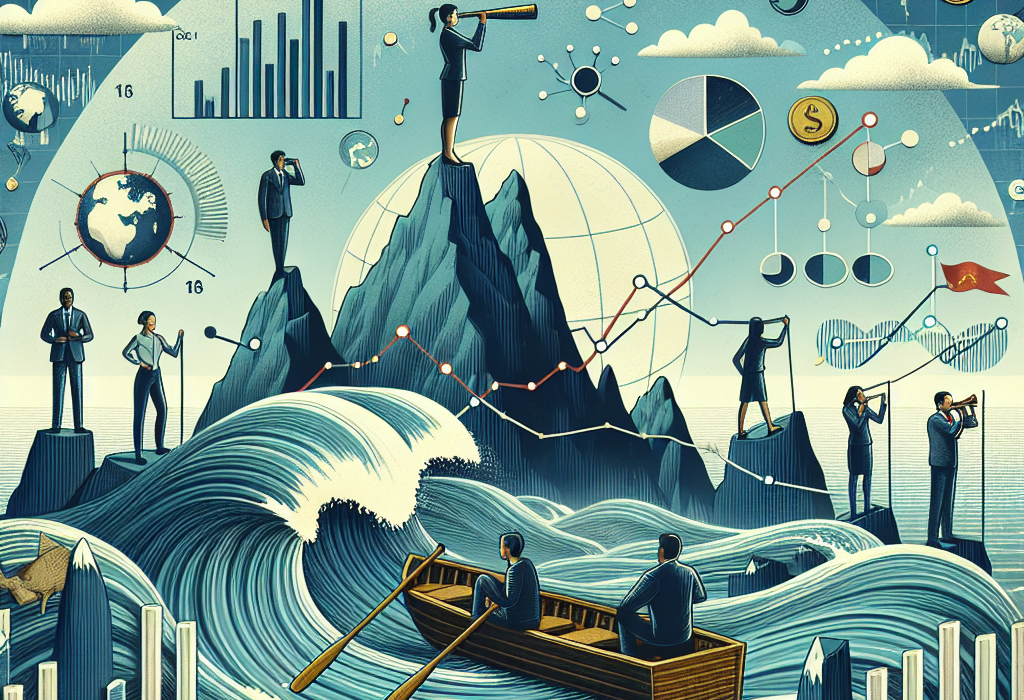The current economic climate drastically varies from one year ago. As nations continue to grapple with the effects of the COVID-19, some economies are on the road to recovery while others are still struggling. Additionally, digital transformation and technological advancements are reshaping the traditional economic landscape at a faster pace than ever. This article provides an insight into the current economic landscape.
The Current Global Economy
As we enter the third decade of the 21st century, the global economy is slowly emerging from the effects of the COVID-19 pandemic. According to the International Monetary Fund (IMF), the world economy is expected to grow at 6% in 2021, an upgrade from the 3.3% contraction in 2020. The recovery is largely driven by the vaccination efforts and economic support from several governments. However, the growth is not uniform, and there are significant discrepancies between countries and regions.
Emerging Economies and Development
Emerging economies, especially those in Asia and Africa, are projected to grow faster than their developed counterparts. The World Bank forecasts India’s economy will grow by 10.1% in 2021, despite the devastating second wave of the pandemic. However, this is not the case for all emerging economies. South Africa, for instance, is projected to grow at 3% due to longstanding structural issues and the pandemic.
Factors Impacting the Current Economic Landscape
- COVID-19: The pandemic has profoundly impacted the global economy. It led to a sharp contraction in 2020 and continues to impact economies to date, especially in countries with insufficient medical infrastructure and low vaccination rates.
- Technological Advancements: Artificial Intelligence, Blockchain, and other emerging technologies are fast becoming economic force multipliers, driving innovation, efficiency, and productivity.
- Trade Wars: The ongoing trade wars, especially between the US and China, impacts global trade, economic growth, and geopolitics.
- Climate Change: Climate change poses substantial risks to economies across the world. It affects agricultural production, drives up costs for businesses, and poses a financial risk to investors and financial institutions.
- Debt Levels: The large-scale economic support unveiled by governments to support their economies during the pandemic has led to record levels of national debts. This debt needs to be managed carefully to avoid potential financial crises in the future.
Conclusion
As we progress through 2021 and beyond, the economic landscape is expected to continue changing, driven by factors such as the pandemic, technology, trade, climate change, and debt levels. Despite these challenges, the global economy is on the mend, with growth expected to be robust in 2021. However, it is crucial for policymakers to navigate these challenges and exploit the opportunities created by technological advancements to drive sustainable, inclusive growth.
Frequently Asked Questions
-
1. What is the current state of the global economy?
The global economy is recovering from the effects of the COVID-19 pandemic with a projected growth of 6% in 2021. However, this recovery is not uniform and varies between different countries and regions.
-
2. How is the pandemic impacting the global economy?
The pandemic led to economic contraction in 2020 due to lockdowns and business closures. Its impacts continue to be felt, especially in countries with low vaccination rates and inadequate healthcare infrastructure.
-
3. How is technology reshaping the economy?
Emerging technologies such as artificial intelligence and blockchain are driving innovation and productivity, thereby transforming the traditional economic landscape.
-
4. How do trade wars impact the global economy?
Trade wars often result in tariffs and trade barriers, impacting international trade, economic growth, and geopolitics.
-
5. How does climate change affect the economy?
Climate change affects agricultural production, increases costs for businesses, and poses financial risks for investors and financial institutions.













